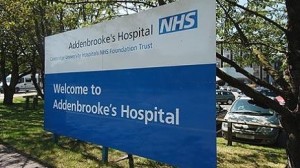Just a couple of weeks ago 3Dprintingindustry.com reported on how the UK’s National Health Service was actively implementing 3D printing to reduce surgery times and costs; now two more Britsh hospitals have got into 3D printing, this time to improve patient care.

Furthermore, it has been demonstrated that visualizing their illness in certain cases can help patients recover faster. This works for mental and virtual images, it may work even better with actual, physical representations.
“3D printing is rapidly becoming an integral component of standard clinical care,” said Academic Clinical Fellow (Registrar) in Radiology, Dr Karen Eley. “It plays a part in patient investigation, patient education, informed consent, patient management, student, trainee and staff teaching, and research. The ability to produce anatomically correct models in a cost-effective way not only brings many aspects of patient care to life, but has potential scope to revolutionise the future of medicine.”
The service, which is expected to be fully operational within the next three to six months is led by Dr. Eley and it will be based on the collaboration between the departments of radiology, maxillofacial surgery, engineering and Media Studio. The team is working with Addenbrooke’s Charitable Trust (ACT) to raise funds to make the centralized printing service available to all clinicians.
Furthermore, as in the previously mentioned case, the service will produce models of complex and difficult to visualise anatomy which will prove invaluable in planning complex surgery. That means an increase in accuracy and a decrease in operating time, meaning the patient is likely to recover more quickly.


